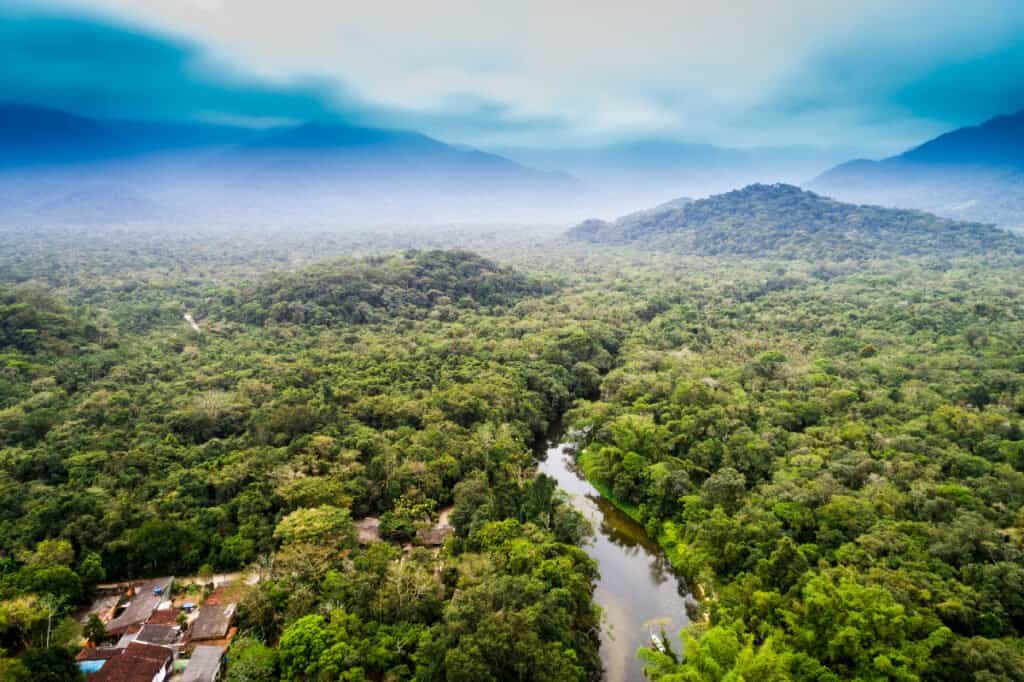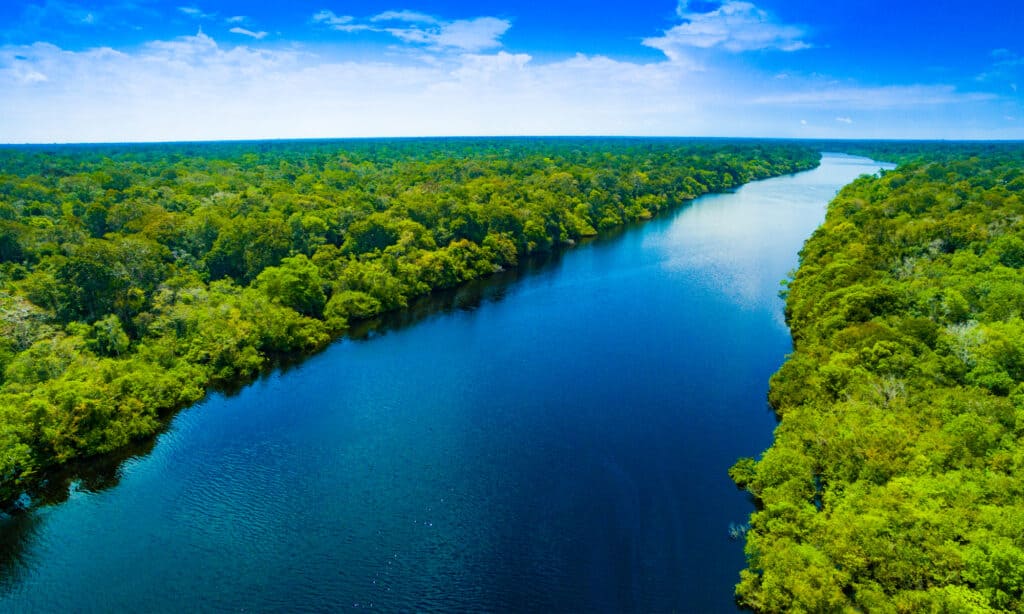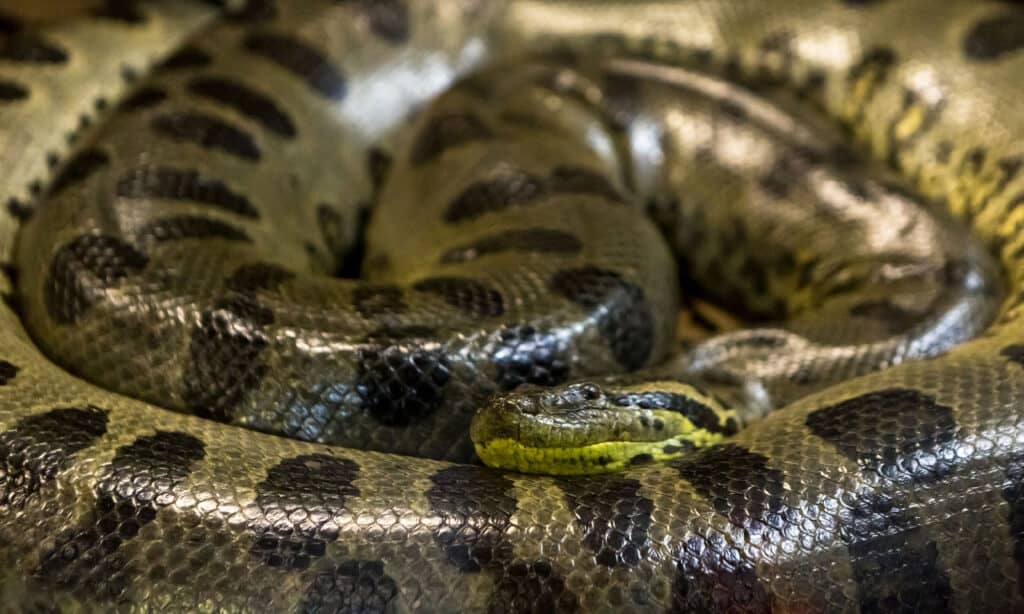The Amazon River is the largest river in the world. It’s the second-longest after the Nile and eleven times the volume of the Mississippi. It has the biggest drainage system on the planet, about the size of the United States. Meandering through the rainforests of Brazil, the Amazon River cuts across South America in the northern portion of the continent and empties into the Atlantic Ocean.
Aside from nurturing numerous rainforests, the Amazon River provides life to many flora and fauna species. Despite centuries of in-depth exploration, the Amazon River still hides mystical, innumerable secrets, and it remains one of the fascinating destinations for authentic adventurers.
However, there has been an ongoing debate on how the Amazon River used to be in the past. Let’s find out why this incredible ecosystem used to be a massive lake.
Why the Amazon River Used to be a Massive Lake

The Amazon River once flowed into the Pacific, was a lake, and today flows a vast distance to the Atlantic Ocean.
©iStock.com/gustavofrazao
Amazon has undergone numerous shifts in its existence. It once flowed into the Pacific, was a lake, and today flows a vast distance to the Atlantic Ocean. Researchers suspect the Amazon once flowed westward instead of its current eastward direction.
The creation of the Andes Mountains about 15 million years ago may have had a considerable influence on the evolution of the Amazon River. The Andes Mountains were formed by tectonic activity when the Nazca plate converged with the South American plate, blocking the flow of the Amazon River. As a result, the Amazon River became a massive lake.
Previously, the river flowed into South America’s Pacific Coast. One main proof that the Amazon water once had contact with the Pacific is the stingray species inhabiting the Amazon. These species are closely related to those living in the Pacific Ocean today and not the ones found in the Atlantic.
Remaining landlocked for about five to ten million years, the waters finally broke the sandstone to the west, allowing the Amazon to flow eastward- straight into the Atlantic. The sea levels then decreased as the great Amazon Lake continuously drained into the Atlantic, eventually becoming a river.
Geological Proof that the Amazon River Used to Flow Westwards
While studying sedimentary rocks in the upper Amazon basin, Dr. Drew Coleman, a professor of geology at the University of North Carolina at Chapel Hill, and Russell Mapes, a graduate student there, found some old mineral grains in the middle of South America.
According to Dr. Drew Coleman and Russell Mapes, the mineral grains originated from the eroded mountains in eastern South America, hence, backing up the idea that the Amazon used to flow westwards. The researchers should have found much younger mineral grains in the sediments if the Amazon had progressively flowed eastward.
What is the size of the Amazon River?

The Amazon River is approximately 4,000 miles (6,400 km) long.
©worldclassphoto/Shutterstock.com
The Amazon River is approximately 4,000 miles (6,400 km) long and slightly shorter than the Nile River. However, some researchers still claim that the Amazon River is longer than the Nile. The river’s mouth reaches 500 billion cubic feet and up to 300 miles per day during the flood season.
The Amazon basin is the largest in the world, with an area of about 7 million square kilometers (2.7 million square miles), nearly twice as much as the Congo River. The basin includes the more significant portions of Peru and Brazil; a small area of Venezuela; and parts of Bolivia, Ecuador, and Colombia.
How Much Water Flows Through the Amazon River?
The amount of water discharged by the Amazon River is greater than that of seven rivers combined. With more than 1,000 tributaries joining the flow, the river supplies 9 to 30 million gallons of water to the Atlantic Ocean daily, decreasing the salinity for more than 200 miles offshore. The river has an average discharge of approximately 6,591 km3 per year. This water is then swept across the world by ocean currents.
What Animals Live in the Amazon River

The Amazon River is home to one-tenth of the world’s animal species.
©iStock.com/MaRabelo
The Amazon River is home to one-tenth of the world’s animal species. Approximately 3,000 species of freshwater fish, including the piranha, pacu, dolphin, arapaima, and electric eel, among others, live in the Amazon River. Other animals found in the river include the black caiman, the giant otter, the green anaconda, and poison dart frogs.
Its surrounding area is also home to millions of animal species, with new ones being discovered on an ongoing basis. The golden lion tamarin, bald uakari, pale-headed saki monkey, cougar, and several bird species live within the Amazon River Basin.
Fun Facts About the Amazon River
Here are five amazing facts about the Amazon River:
1. The Amazon River originates in Peru
Although there seems to be wide speculation regarding its source, it’s believed that the Amazon River originated from the Andean Mountains of Peru. It then travels through Brazil, Bolivia, Venezuela, Colombia, and Ecuador, before emptying into the Atlantic Ocean.
2. “The Hero in a Speedo!” A Slovenian Athlete Swam Almost the Entire River in 66 Days
Martin Strel, a Slovenian athlete, defied the odds of danger awaiting him in the river and swam a total of 5,268 km, almost achieving the Amazon’s total length of about 4,000 miles. He’s nicknamed “The Hero in a Speedo” since he was able to dodge several flesh-eating animals like the piranha living in the river.
3. It has Over a 100 Dams But No Bridges
The Amazon River has over 100 dams, most of which provide electricity in the form of hydropower. However, the river has no bridges, and people can only cross the freshwater flow by boat. Using a boat is also the only way to travel further along the river and reach more remote places within the Amazon.
4. It Provides 20% of the Ocean’s Fresh-Water Supply
The Amazon River carries 20% of the planet’s water to the sea. Like a watershed, the river collects rainfall from miles around, including the Amazon Rainforest and the Andes Mountains, creating a muddy patch of salty-vs-fresh water covering an area of about 2.5 million square kilometers.
5. It is Also Called the River Sea
The Amazon River is widely known as the “river-sea” due to its extensive drainage and water flow, accounting for one-fifth of the world’s total river flow. The river is also vast. Its discharge is more significant than seven large rivers combined. By standing on any shore of the Amazon River and looking far beyond, you will understand why it’s called a “river-sea.”
The photo featured at the top of this post is © worldclassphoto/Shutterstock.com
Thank you for reading! Have some feedback for us? Contact the AZ Animals editorial team.






